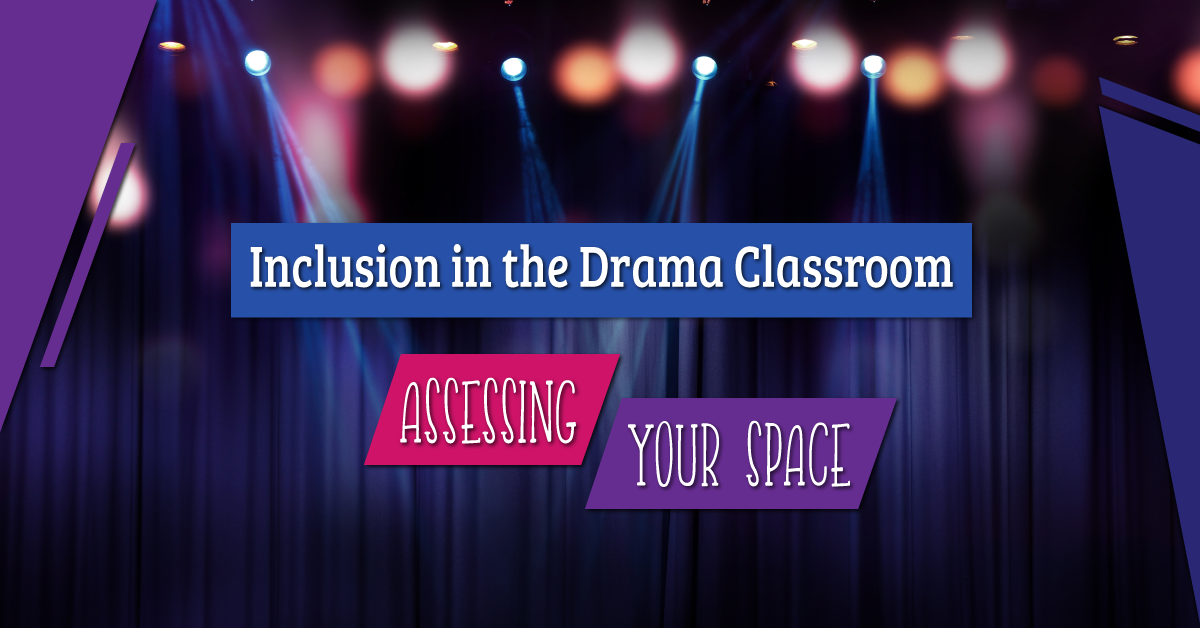The Inclusive Classroom: Drama Class for Students with Special Needs
“Special needs” is a broad term that describes individuals who require assistance for disabilities that may be medical, mental, or psychological. Every student with special needs is different, and their needs are entirely unique. Students with autism or Asperger’s syndrome, dyslexia and other learning disabilities, blindness or vision impairment, ADHD, epilepsy or cerebral palsy may be considered to have special needs. But there are many more clinical diagnoses for special needs as well.
With the advent of relaxed performances at professional theatres around the world (where shows are performed with reduced sound and lighting levels and the option to move around or leave and return to the performance as needed), and wonderful productions such as Deaf West Theater’s Broadway production of Spring Awakening, which featured actors who are hearing-impaired as well as actors who use wheelchairs, theatre is proving to be a wonderful place for all – regardless of abilities or disabilities. As drama educators, we have the opportunity to really encourage students to explore the world of theatre and to take steps to make sure it is accessible for any student who desires to learn more about it, to participate in it, and to grow a life-long love for theatre! Here are some tips to get started.
1. Identify the unique needs of each student.
Every student is different, and any student with special needs is going to have different abilities and things that they can and cannot do. Make it a priority to meet with your students (or their families, if necessary) to discuss what their goals are and what they’d like to achieve by taking drama classes or participating in a production. The more information you have ahead of time, the better prepared you are to help your students to succeed.
2. Use proper language.
Using correct language is important. There is some debate about whether people-first language or identity-first language is preferential. In people-first language, the aim is to not define students by a disability or health issue because it is considered to dehumanize them and define them as something that they are rather than a condition or trait that they have. In this case, it is proper to use terms like “student with autism” or “student with ADHD” rather than “autistic student” or “ADHD student.” On the other hand, identity-first language is also frequently used, particularly by those in Deaf culture, since being culturally deaf considered to be a source of positive identity and pride. Overall, it is a personal preference for each student.
It is also important to avoid negative and ableist terms when referring to students with special needs. Avoid saying things like “he suffers from x diagnosis” or “she is a victim of x diagnosis.” Students with special needs are not victims or are suffering, and must not be patronized or treated in a way to bring shame or embarrassment. Nor are they worse-off or inferior for having special needs or a disability. A disability descriptor is simply a medical diagnosis.
3. See what you can do to help students succeed in drama.
There are lots of ways you can assist students with special needs in the drama classroom. Focus on what your students can do, rather than on what they can’t do. Consider the following:
- Ensure that your classroom or auditorium has the necessary infrastructure for students who use wheelchairs or walkers, such as ramps or lifts.
- Provide large-print, Braille, or audio scripts for students who are blind or have vision impairment.
- Provide visual cues such as signs or hand gestures for students who are deaf or hard of hearing. If possible, a video feed would be wonderful to help students who can’t hear auditory cues know when they need to go onstage.
- Give scripts to students who have dyslexia or difficulty reading ahead of time, so they can prepare in advance.
- Designate a quiet area for students with sensory concerns so they can relax or decompress during a high-energy or over-stimulating exercise or theatre game.
- Learn more about augmentative and alternative communication methods for students with speech or language problems. For example, a student could use a voice recorder or iPad application (such as iConverse) to help them perform their lines.
- Find out if your student would benefit from an aide, assistant, or interpreter.
- Offer a relaxed performance of your next school show for audience members who could benefit from it.
- Don’t rule out a student with special needs from performing in a production. If they are the best actor for the part – cast them!
- Look for and study shows that feature characters with special needs. For example, the character Archie in 13: The Musical uses crutches because he has muscular dystrophy. The lead character Christopher in The Curious Incident of the Dog in the Night-Time has autism.
Treat all of your students equally. A student with special needs may need some specific accommodations at times, but mostly they want to be part of what everyone is doing.



